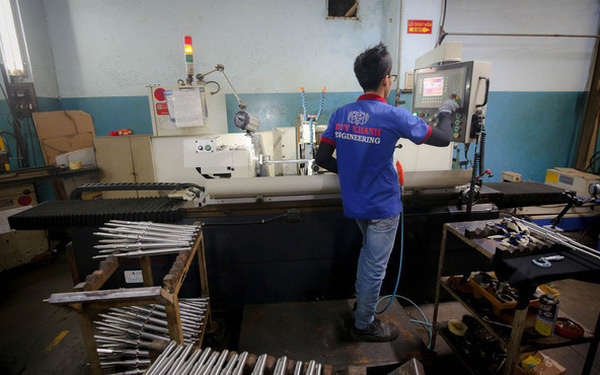Director of the Vietnam Industry Agency Truong Thanh Hoai said Covid-19 has hit Vietnam’s industries hard. Most enterprises in textile and garment and footwear only have materials enough to maintain production until the end of March or early April.

A report showed that in 2019, Vietnam imported $40 billion worth of electronic parts, of which 42 percent was from South Korea and 34 percent from China. Electronics manufacturers said they only have materials for production until mid-March.
Electromechanical engineering id the biggest sufferer. Do Phuoc Tong, chair of Duy Khanh Engineering, said while garment and footwear producers can seek new material suppliers from domestic sources, mechanical engineering enterprises cannot.
| Covid-19 not only brings challenges, but also opportunities. The enterprises which provide components and accessories can boost sales at this moment as Chinese supplies have been interrupted. |
Covid-19 not only brings challenges, but also opportunities. The enterprises which provide components and accessories can boost sales at this moment as Chinese supplies have been interrupted.
However, the production cost in Vietnam is higher than in China, which makes products in large quantities.
“It is very risky to make investments to manufacture components and accessories without support from the State,” Tong said.
The supply interruption from China has forced Vietnam’s enterprises to seek new supply sources from South Korea, Japan and Taiwan. However, the epidemic has begun escalating in South Korea and Japan. So, Taiwan is the safest choice.
“The lack of input materials is the problem of not only Vietnam’s enterprises, but enterprises all over the world as well. So, we have to compete with the whole world,” he explained.
Also according to Tong, it always takes time, several months at least, to find new supply sources.
More worryingly, most steel and aluminum materials for Vietnam’s engineering enterprises need to be imported from China. His Duy Khanh Company does not import products from China, but its material suppliers import products from China.
The textile and garment industry has also suffered from the Chinese supply cut. Eighty percent of fabric needed is from imports, and 50 percent of which is from China, 18 percent from South Korea and 15 percent from Taiwan, according to a study by the HCM City Food Industry University.
According to Le Dang Doanh, a respected economist, many garment companies will run out of materials at month end.
Tran Thi Giang Thuy, vice president of Thai Binh, which runs a baby diaper factory in Cuba, commented that in the textile and garment industry, it is not easy to escape reliance on China.
Thanh Mai

EVFTA brings opportunities to escape reliance on Chinese market
The next-generation FTA with the EU is believed to pave the way for Vietnam to diversify export markets and ease reliance on China.

COVID-19: Big gatherings suspended in many ASEAN countries
The Lao Government has decided to postpone all big meetings gathering large number of people for major celebrations in 2020 as a strong measure to prevent outbreaks of the coronavirus disease (COVID-19).
 Because of the Chinese supply interruption in Covid-19, Vietnam’s enterprises have tried to import materials from Japan and South Korea. But the two countries have also been suffering from the epidemic.
Because of the Chinese supply interruption in Covid-19, Vietnam’s enterprises have tried to import materials from Japan and South Korea. But the two countries have also been suffering from the epidemic.